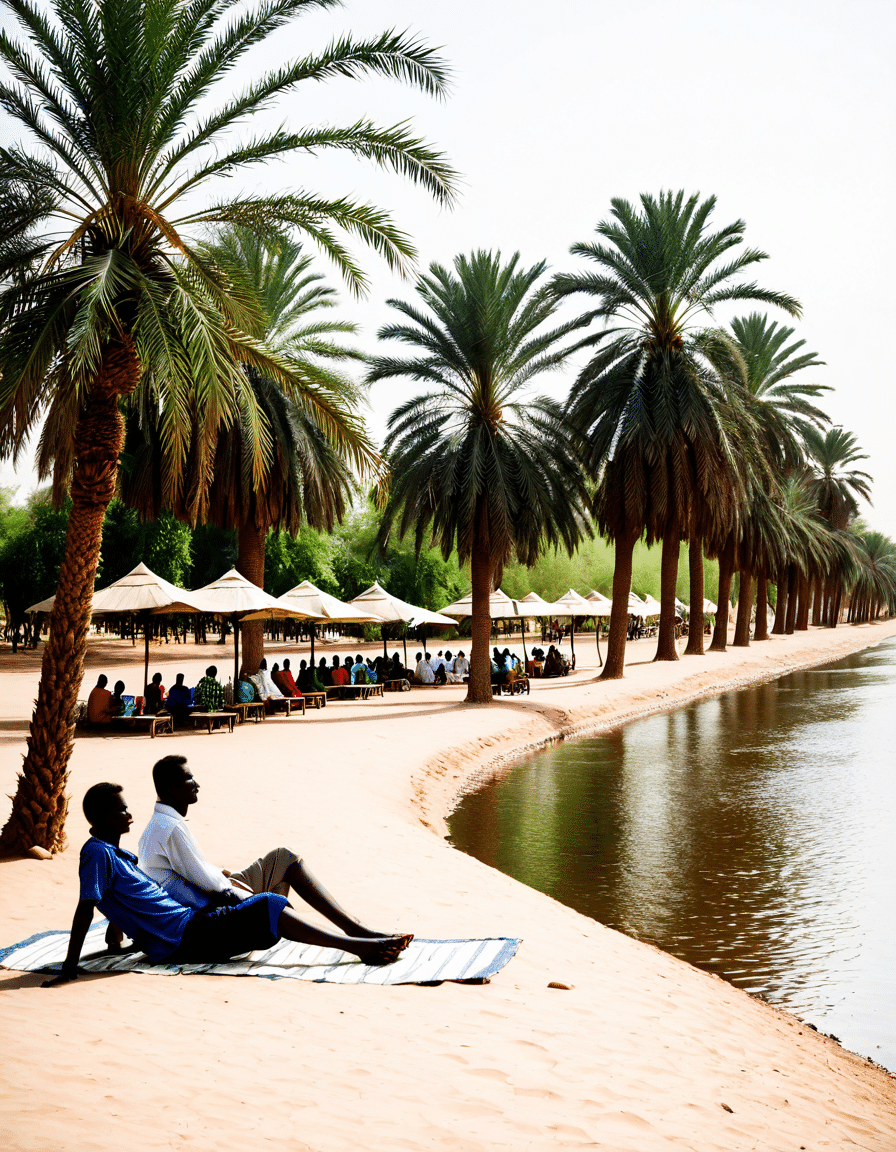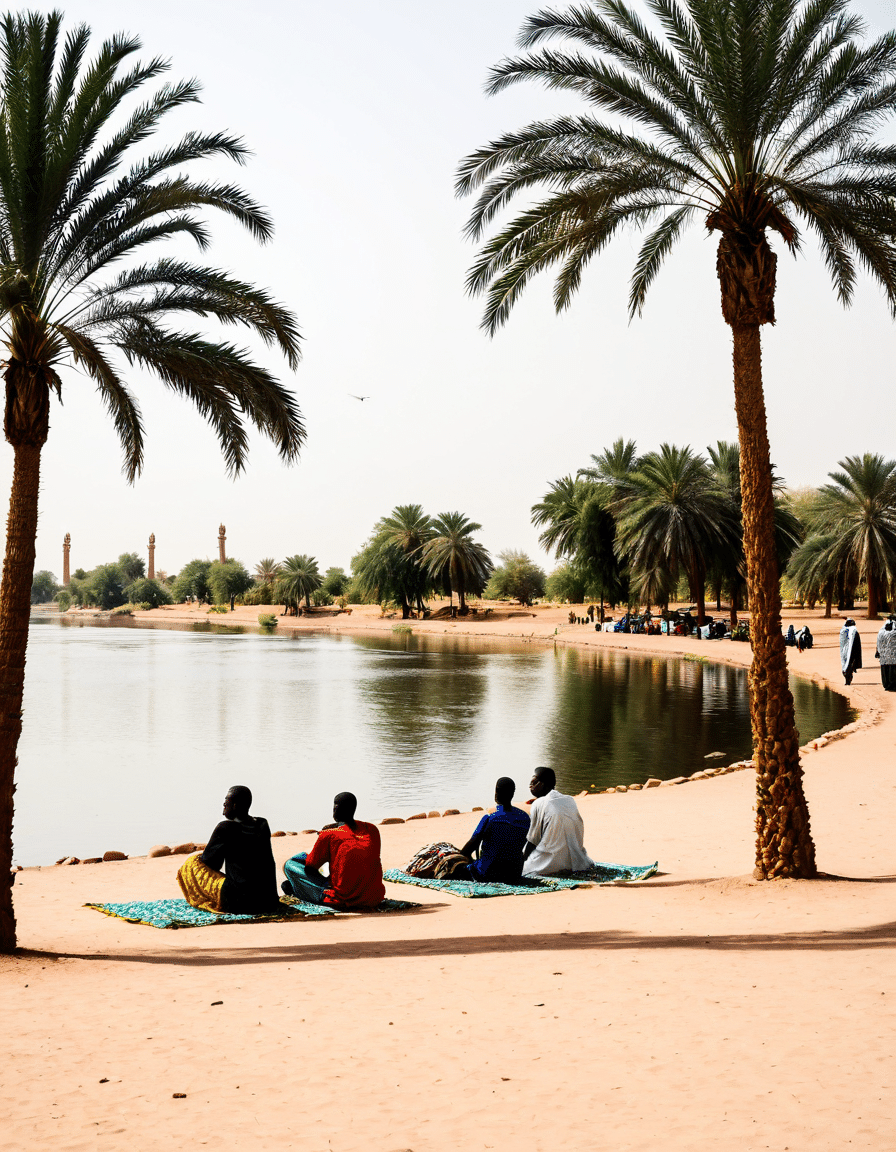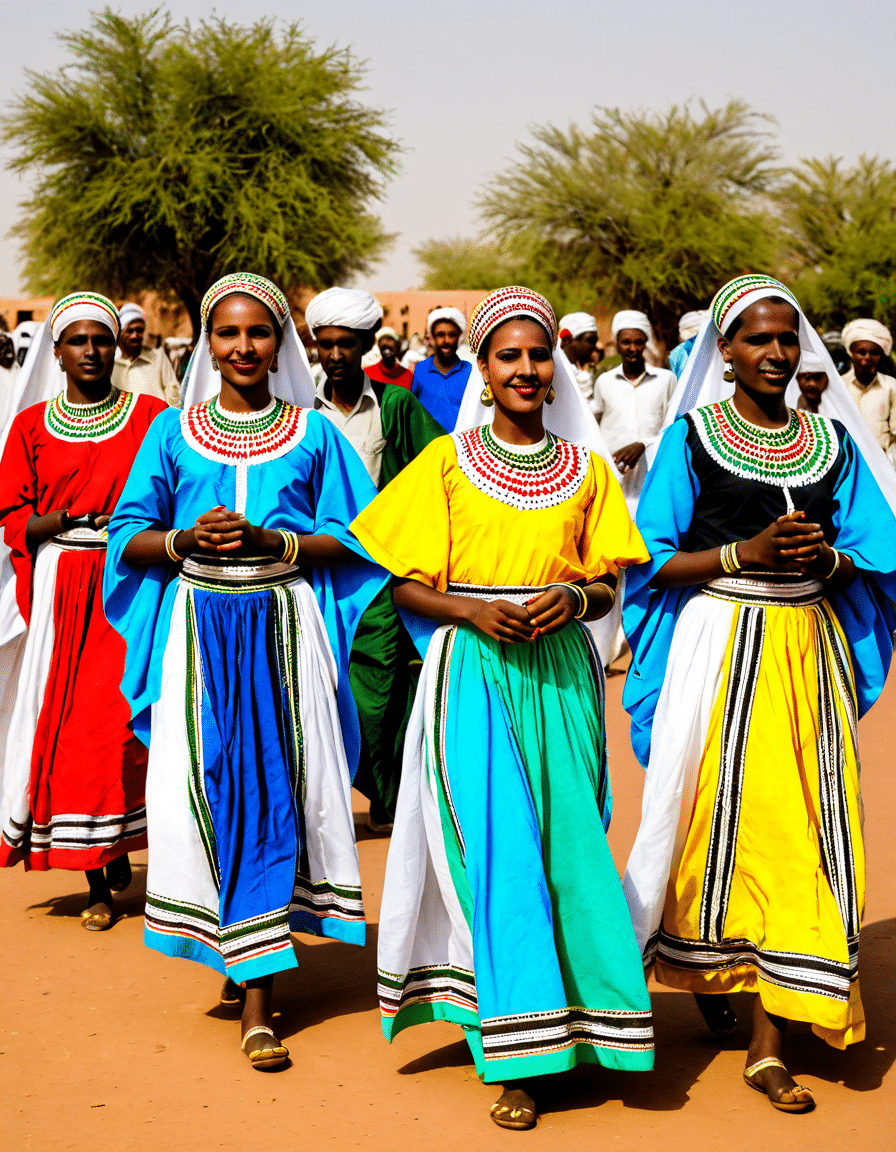Khartoum, Khartoum! Those two words alone spark a wealth of emotions and stories. At the intersection of two mighty rivers, Khartoum is not just Sudan’s political capital; it’s a vibrant cultural hub that pulses with rich history and tradition. From ancient civilizations to contemporary influences, the city offers a kaleidoscope of experiences worth exploring. This article will take you on a detailed journey through Khartoum’s heart and soul, showcasing its unique heritage, must-visit landmarks, and the evolving dynamics that shape its future.
The Soul of Sudan: Exploring Khartoum’s Unique Heritage
In Khartoum, the essence of Sudanese culture leaps out at you. The city has deep roots, stretching back to ancient times, resting at the confluence of the Blue and White Nile rivers. This geographical feature isn’t just stunning; it symbolizes the unity of diverse cultures that have coexisted in the region for centuries. Key landmarks, like the Sudan National Museum, house artifacts dating back to the kingdom of Kush, letting visitors step back in time and understand the intricate narratives that have sculpted modern Sudan.
Architecture in Khartoum tells its own story too. From colonial-era buildings that reflect the time of British and Egyptian rule to modern glass towers symbolizing the future, the city’s skyline embodies its vast history. Additionally, places like the Mahdi’s Tomb, which honors Muhammad Ahmad’s legacy, resonate with visitors who seek a glimpse of Sudan’s struggle for independence. Walking through the streets of Khartoum, you can feel the city’s stories whispering through the winds, waiting for people to listen.
Khartoum is more than just historical landmarks; it’s home to vibrant communities that celebrate their rich heritage through language, art, and daily life. The festivities and cultural practices of different ethnic groups play a crucial role in sculpting the identity of the capital. This blend of cultural influences, both past and present, makes Khartoum a living testament to Sudan’s complexity and beauty.

Top 7 Must-Visit Places in Khartoum Khartoum
A visit to Khartoum isn’t complete without exploring these seven remarkable landmarks that truly embody the city’s essence:
This museum is a treasure trove of Sudan’s past, showcasing artifacts from the ancient kingdom of Kush. Here, you can marvel at sculptures, mummies, and various relics that provide a peek into the lives of Sudanese ancestors.
The meeting point of the Blue and White Nile is not just a beautiful sight; it’s a popular spot for gatherings. People come here for picnics, photographs, and to soak in the stunning vistas.
Entering this traditional market is like stepping into a colorful tapestry woven with sounds, sights, and aromas. From spices to crafts, engaging vendors gives you special insight into the daily lives of the locals.
This green oasis offers a break from the urban hustle. With winding paths and recreational options available, it’s an inviting space for families and individuals to relax close to nature.
Not just an architectural marvel, this site celebrates a significant historical figure. Here, visitors can learn about the Mahdi’s pivotal role in Sudanese history.
A hub of creativity, this venue hosts a plethora of performances that highlight Sudan’s vibrant arts scene. From drama to music shows, each event is a celebration of local culture.
This museum stands as a reminder of the Khalifa era, showcasing artifacts that chronicle the struggle for Sudanese independence. It enriches visitors’ understanding of the nation’s past.
Cultural Festivals: A Celebration of Tradition and Modernity
Khartoum comes alive during various cultural festivals throughout the year. The Khartoum International Book Fair is a standout event, drawing authors, poets, and book lovers from all corners. This festival isn’t just about books; it stimulates deep conversations about culture and society, fostering a sense of unity among attendees.
Moreover, the Sudanese Film Festival is another prominent event that showcases cinematic creativity. Here, audiences can watch films that reflect Sudan’s reality, dreams, and artistry. Artists like Imane Khelif, a local musical sensation, frequently grace these festivals, performing melodies that intertwine modern and traditional sounds. Her schedule is always a highlight, drawing many fans eager to experience the pride of Sudanese music.
These festivals serve as cultural bridges—linking the past with the present, allowing people to celebrate their heritage while embracing new influences. There’s something magical about gathering to dance, sing, and share stories from generation to generation while nurturing a sense of belonging.

Culinary Delights: The Flavors of Sudan
The culinary landscape of Khartoum is just as diverse as its people. Sudanese cuisine is a delightful medley of flavors, reflecting the rich agricultural produce of the region. Dishes like Ful Medames, commonly enjoyed for breakfast, showcase stewed fava beans served with spices that awaken the senses.
Another staple, Kisra, a type of sourdough flatbread, forms the base of many meals and is often paired with stews, offering an authentic taste of the region. For a unique treat, be sure to try Asida, a traditional porridge that’s often sweetened or served with savory sauces.
Exploring Khartoum’s bustling street food scene is essential for any foodie. Vendors selling various snacks give visitors a glimpse into the culinary traditions passed down through generations while satisfying their cravings for local flavors. Each bite tells a story, connecting the eater to the history and culture of Khartoum.
Navigating Modernity: Khartoum’s Development and Global Impact
As Sudan rises to face modern challenges, Khartoum stands at the forefront of economic and infrastructural growth. Investments in education and technology are shaping the future, guiding young entrepreneurs toward innovative paths. The government’s emphasis on modernization signals a commitment to transforming the nation’s landscape while respecting its roots.
Youth in Khartoum increasingly engage in social movements, seeking change and opportunities. This demographic shift plays a vital role as these young individuals dream of a future where they can influence both local and global conversations. They are making waves, contributing new ideas, and integrating modern technology into everyday life.
Khartoum’s strategic location enhances its relevance as a diplomatic hub. Economic partnerships are blossoming within Africa and the Middle East, creating pathways for international collaboration. As the city builds bridges across borders, it positions itself as a center for growth and cooperation, ensuring its voice resonates on a global stage.
Social Changes and Community Dynamics in Khartoum
As Khartoum transforms, its social fabric shifts alongside it. Urbanization brings new opportunities for its citizens while encouraging diverse perspectives to flourish. Women, in particular, are stepping into roles that challenge traditional norms, leading initiatives in politics, business, and the arts.
Figures like Imane Khelif serve as icons of empowerment, inspiring others to embrace their voices and strive for change. As societal expectations evolve, the dialogue around gender and identity becomes more prominent, indicating a broader acceptance and understanding.
Communities within Khartoum are increasingly collaborating, harnessing the power of collective effort to address pressing issues, from economic challenges to cultural preservation. The devastating effects of conflicts, however, still linger, but the resilience of its people shines through. Change, though often gradual, spells hope for a brighter, more inclusive future.
The Future of Khartoum Khartoum: Building Bridges
Khartoum finds itself at a significant crossroads. As the city works to balance tradition with modernity, its path forward is filled with both challenges and opportunities. Leaders and citizens alike must engage in open dialogues that incorporate diverse voices, ensuring everyone has a stake in shaping Khartoum’s trajectory.
By integrating modern technology with a respect for its rich history, Khartoum can develop into a vibrant cultural and political center. Its potential to serve as a beacon for future generations lies within its ability to adapt while honoring its past.
Through this journey across Khartoum’s heart and culture, it becomes crystal clear that this capital isn’t just a geographical location. It’s a testament to resilience, creativity, and the ongoing narrative that embraces its roots while ambitiously looking toward a prosperous future. Whether you’re a history buff, a culinary explorer, or a seeker of stories, Khartoum Khartoum has something to offer everyone—an invitation to witness the soul of Sudan come alive.
Khartoum Khartoum: Fun Trivia and Interesting Facts
The Unique Essence of Khartoum Khartoum
Did you know that Khartoum is where the Nile River splits into two major tributaries—the Blue Nile and the White Nile? This geographical marvel creates a striking confluence right at the city’s heart. With its rich riverside heritage, Khartoum has become a vibrant hub of culture and life. This lively city is not only significant for its unique location but also for its vibrant arts scene, where you might stumble upon a fascinating performance or exhibition, much like the buzz surrounding a recent celebrity incident related to the Selena Gomez leak.
A Cultural Mosaic
As you walk through Khartoum Khartoum, you’ll notice a dynamic mix of cultures. The city’s population includes a medley of ethnic groups, each contributing to Sudan’s rich tapestry. In fact, food lovers will find a culinary adventure waiting, from traditional stews to spicy snacks that evoke joy with every bite. Speaking of delightful surprises, have you heard about the rising star, Sadie Summers, who’s making waves with her distinctive creativity? There’s something magical about how art and culture intersect here, enhancing Khartoum’s allure.
Thriving Innovations
Moreover, Khartoum Khartoum is becoming an innovative center. Recent developments in technology and business are turning heads, similar to the buzz around Ezekiel Elliott news today. The city is not just about history and tradition; it is also embracing a forward-thinking mindset. Just as recent local discussions about Proposition 1 highlight community engagement, Khartoum is becoming a platform for modern ideas and innovations, capturing the attention of both locals and visitors alike.
Experience the blend of history, culture, and contemporary flair in Khartoum Khartoum. As you explore, keep an eye out for local artisans and creators, perhaps even making a connection with the charming ethos that drives artists like Jack Dafoe. So dive in, discover the beauty of Khartoum Khartoum, and let it leave a lasting impression on your heart and soul!




